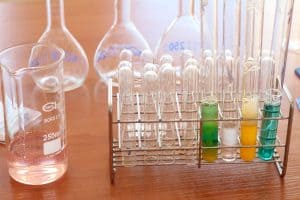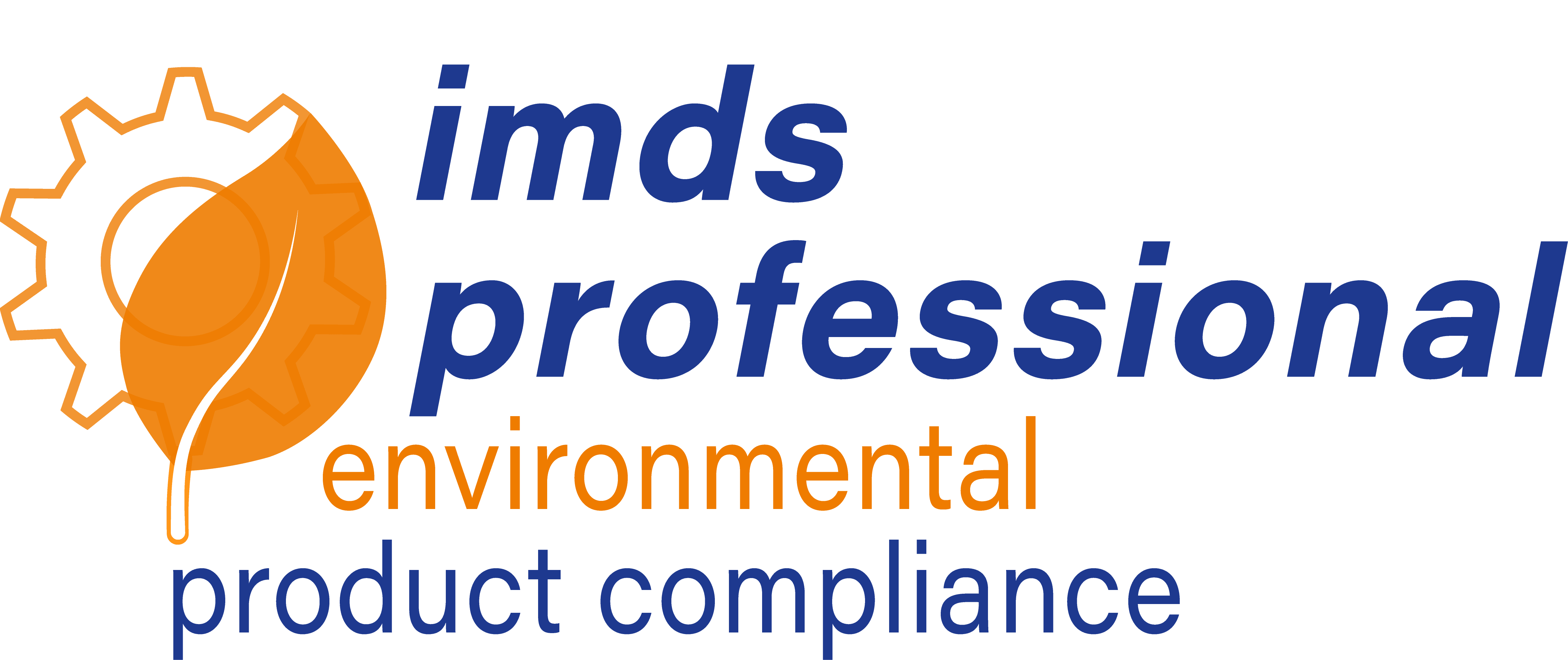Expert information about biocides
Information and services on biocides
The Biocidal Products Regulation (BPR)

Biocides are chemical substances or microorganisms that are used to protect people, animals, materials or products from pests or bacteria. The European Biocidal Products Regulation stipulates how these substances and microorganisms can be used. It aims to ensure that only tested biocidal products can be placed on the market that are sufficiently effective and are safe for humans and the environment. It is vital that you establish whether packaging contains biocides as these could pass into the product. We provide support services and training courses on biocides to companies that need to submit reports to the European Chemicals Agency (ECHA).
The European Biocidal Products Regulation (BPR, Regulation (EU) No. 528/2012, also called the “European Biocides Regulation”), governs how biocidal products are used and placed on the market throughout Europe. The Regulation defines biocides as:
active substances and preparations that, in the form in which they are supplied to the user, contain one or more active substances, with the intention of destroying, deterring, rendering harmless, preventing the action of, or otherwise exerting a controlling effect on any harmful organism by chemical or biological means.
The versatility of biocides in application
Biocides are used in a wide range of products and chemicals on the market. For example, they can help to prevent or destroy harmful organisms, such as rats, insects, fungi, mold, and microbes. The active substances in biocides are chemicals or microorganisms. They are used in products such as rat poison, wood preservatives and disinfectants. Biocidal products are not used in agriculture and are therefore designated as “non-agricultural pesticides”.
Some active biocidal substances pose a risk to humans and the environment. Some are persistent in the environment and are bio-accumulative. This means they accumulate in living organisms. Since they pose potential risks to the environment and human health, an environmental risk assessment of biocidal products is mandatory before they can be authorized.
There are 22 known types of biocidal products. The European Chemicals Agency ECHA classifies these into four main groups:
- Disinfectants for household use and industry
- Preservatives for manufactured and natural products
- Pest control agents
- Other specific biocidal products, e.g., antifouling products
As from September 2015, biocides may only contain active substances that are registered on the ECHA’s European Union list of approved active substances. The EU Biocidal Products Regulation (BPR) 528/2012 allows several authorization routes. For example, biocidal products may be authorized on the national level and recognized mutually by other Member States. Another alternative is European Union-wide authorization via the European Chemicals Agency (ECHA). If a request is made to the ECHA, substances can be tested in an EU-wide procedure so that they can be included on the “positive list” of biocidal products (Union authorization). If this is the case, companies can apply for biocidal products containing this substance to be authorized in individual EU Member States.
Once an active substance has been tested by the ECHA, the European Commission decides whether to authorize it and issues an implementing decision. This specifies how long an active substance is authorized for. This is generally for two years after the decision.
Authorization of biocides at national level
The authorization process for biocidal products in the EU therefore involves two stages. The authorization bodies in the Member States are responsible on the national level. In Germany, this is the Federal Institute for Occupational Safety and Health (Bundesanstalt für Arbeitsschutz und Arbeitsmedizin – BauA). In addition, the Federal Environment Agency (UBA) tests the effects of biocidal products on humans and the environment. Biocidal products must always be authorized by the UBA.
However, the European Biocidal Products Regulation (BPR) also specifies that authorization may be refused on the national level for environmental protection reasons, even if substances are in principle authorized for EU-wide use.
A simplified procedure is laid out in the European Biocidal Products Regulation (BPR) for products with a good environmental and health profile. It applies to products whose active substances are listed in Annex I of the Regulation and which do not otherwise contain any substances that pose a risk to the environment or health.
Duration of approval and re-approval
Authorization of biocidal products expires after a maximum of ten years and must be reapplied for.
Entire product families can also be authorized. Examples of these product families are those which only differ in terms of fragrances or colorants. If a product family has already been authorized, products only need to be reported and then they can be used on the European market.
The Review Programme Regulation for existing active substances applies to active substances that were on the market in the EU before 2000. These substances are first identified and then checked to establish whether there is already a notification. In other words, whether there are already potential users who have an interest in authorization. Biocidal active substances of this kind are listed in Annex II of Regulation (EU) no. 1451/2007. The Review Programme Regulation should already have been completed by May 2010; however, the deadline was first extended until 2014 and then again until 2024.
The Review Programme Regulation for existing active substances states that evaluations of risk to humans and the environment and the efficacy of substances must be carried out. Only substances where there is no unacceptable risk if they are used as intended are included in the Union list of authorized active substances. If necessary, the substances need to comply with conditions and restrictions for use. Active biocidal substances that are not on the positive list may no longer be used.
Notification obligation and transitional regulation for biocidal products with existing active substances
Biocidal products which only contain existing active substances that still need to be reviewed are subject to a transitional arrangement and need to be reported but not authorized. This reporting costs nothing and can be done using an online form. The trade name of the biocidal product and the names, CAS and EC number of the active biocidal substance must be given in accordance with the Biocide Reporting Order which is part of the Chemicals Act. If a biocidal product is marketed under different trade names, several reports must be submitted.
Appropriate labeling on packaging has been a requirement for biocides since December 1, 2010, and for biocidal products since June 1, 2015 (see CLP Regulation).
Important to know: Make sure you check both your products and packaging to see if they contain biocides which could permeate the product. For example, in 2007 it was revealed that the toxic substance dimethylfumarate contained in bags of silicate desiccant were permeating leather couches.
According to the REACH Chemicals Regulation, packaging should be considered separately to the product. Packaging cannot be entered into the IMDS but should be entered into the CDX system. Details of packaging are only to be found in the IMDS as an exception, for example, if an automotive manufacturer explicitly requests this.
Companies need to check whether their own products contain biocides that are prohibited under the Biocidal Products Regulation. This process is not straightforward and requires some background knowledge.
Biocides are also listed in the Global Automotive Declarable Substance List (GADSL). This is updated each year to include substances in the automotive industry that need to be declared. In this case, the options available in the IMDS should not be used to obscure these substances for other reasons, such as to safeguard trade secrets.
Reasons for the obligation to declare substances
Substances may need to be declared for various reasons. For example, a law may be in place that states that Substances of Very High Concern (SVHC) must be reported, or a declaration may be mandatory from a materials technology perspective.
A substance may also be prohibited under any circumstances whatsoever. In this case, it is necessary to check what this prohibition applies to. For example, you may need to determine if the substance is only used as a biocide. However, a “mandatory declaration/prohibited” category also exists, which is a combination of “prohibited” and “subject to declaration”. This basically means a prohibition with some exceptions. For example, lead is completely prohibited in automotive components, but there are precisely defined exceptions (ELV) for certain components.
Expert advice and support on biocide issues
We have extensive knowledge of biocides and their use in the automotive industry. Please don’t hesitate to contact us to find out how we can support you. Let us lighten your workload with our highly effective consulting, training, and support services.
Since release 10.0, there has been a “Group of basic substances for biocides” (GADSL) in the IMDS that lists 21 basic substances. You can search for your own data and all accepted Material Data Sheets (MDS) in the Reference List.
The automotive industry has identified three product groups from a total of twenty-two in which possible biocides in automotive components are listed: product groups 7,8 and 9. The biocides listed in the GADSL are attributed to these product categories.
Individual groups or lists of basic substances can be searched for or filtered in the MDS in the CDX (Compliance Data Exchange) database. This database is also managed by DXC Technology and runs in tandem with the IMDS.
The search category for biocides contains 436 entries in the CDX and the IMDS, which can be found when searching for basic substances. All biocides are listed here, not only those in product groups 7-9.
| Regulation (EU) No. 528/2012, governing placement on the market and use of biocidal products: | Link |
| REACH-CLP biocide helpdesk: | Link |
| ChemLAW lawyers who specialize in legislation on biocides: | Link |
| Information on biocides from the Federal Environment Agency (UBA): | Link |
| Information from the UBA on how biocides are authorized: | Link |
| ECHA-Information about biocides: | Link |

Support services relating to biocides
Do you need help classifying your products or advice on the correct handling of legal requirements? Then you have come to the right place, because we offer competent help from our experienced staff within the shortest possible time.
Biocide training courses
Are you looking for a training on biocides? At our ipCampus you will find training courses worldwide and in many languages.
